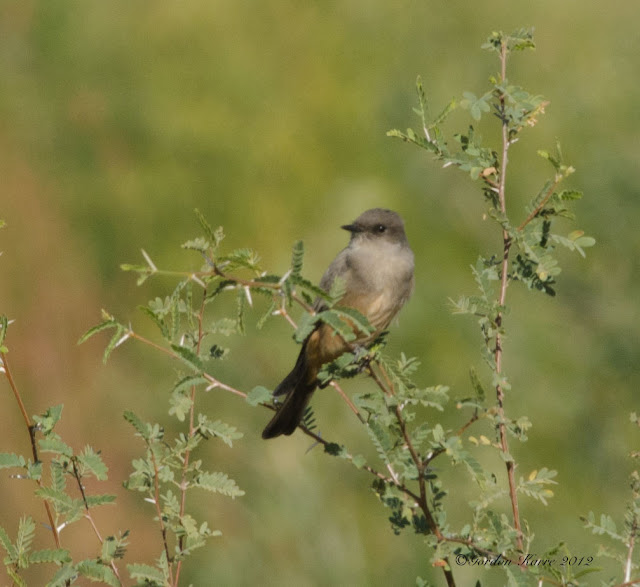I noticed that I have fallen behind on updates, but in some instances I felt I was reporting on the same birds that I see quite frequently and that get to be a bore for some people reading this blog. However many birders just like birds period and it does not matter if they are frequent or common birds or if they are rare birds. Even in my adventures, I am discovering a lot about behavior and habits on even the most common birds and some of it is very entertaining.
On Saturday, I ventured out to Tres Rios once again and this time with Bernie Howe who had not been there, but had just received his permit for access to this place and was anxious to check it out. So off we went, arriving about 7:00 am and immediately we were amazed at all the birds around us everywhere; in the sky, in the trees, on the water and in the reeds growing in the water. The prize of the day was a leucistic Cormorant that we happened to discover swimming in the small pond just before the spillway area. I looked out into the water and saw a white bird that looked very unusual. It was swimming with an upturned bill like a cormorant, but the cormorants in Arizona are not white. We basically have 2 species of cormorants in Arizona, the Neotropic and the Double Crested and they can be very difficult to identify even as adults. This was a Leucistic Cormorant and there is a lot of speculation on which species it is, seems everyone has a different opinion (even the experts). And it really does not matter which it is, but one thing just about everyone can agree on, is that it is one unique and beautiful bird, especially since most cormorants are basically black in coloration.
Leucistic Cormorant
Leucistic Cormorant
Leucistic Cormorant
Was also able to add a new bird to my life list; a Virginia Rail. I knew this bird existed in this location as I had heard it several times in the past, but it is a secretive and elusive bird that likes to hide in the tall reeds. It flew in about the same time that a Sora approached from the other direction and it was hard to determine where I should be pointing my camera. So I attempted to get photos of each. The Sora is not a new bird for me, but they are also secretive and elusive.
Virginia Rail
Sora
Other birds that we found were a Spotted Sandpiper, Black-crowned Night Heron, Belted Kingfisher, and a Great Egret that was doing a balancing act on a high wire.
Spotted Sandpiper
Black-crowned Night Heron
Belted Kingfisher
Great Egret
Some of the smaller birds included 2 phoebes; Black Phoebe and Say's Phoebe, an Orange-crowned Warbler, and the noisy little Marsh Wrens always playing Hide-n-Seek in the reeds. The Song Sparrows were also quite numerous every step of the way.
Black Phoebe
Say's Phoebe
Orange-crowned Warbler
Marsh Wren
Song Sparrow
As we were observing and shooting photos of the cormorant we had a fly-over by a couple of American White Pelicans and later when processing the photos we noticed one of them is carrying a wing tag. So we are currently trying to find out where this pelican was tagged and where its travels may have taken it.
American White Pelicans
















Buena observacion la del Cormoran,las fotos estupendas.Saludos
ReplyDeleteThank you for your comments! It was a very unusual colored bird and a lot of people have commented on it. Lucky to be in the right place at the right time.
Delete